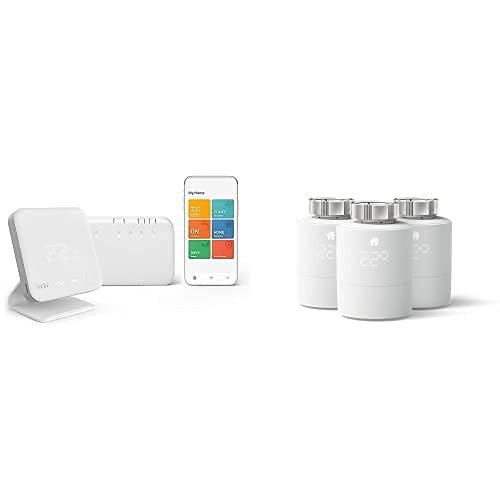Do You Think Shop Lighting UK Ever Be The King Of The World?
Shop Lighting UK: Illuminating the Retail Experience
In the ever-evolving world of retail, the importance of shop lighting can not be overemphasized. It not just improves the visual appeal of items but likewise influences client behavior, their mood, and the overall shopping environment. With Buy Floor Lamps UK in technology and style, shop owners in the UK have a myriad of alternatives to select from when it emerges services. This short article will check out the types of lighting offered, their benefits, and considerations for creating the perfect ambiance in a retail space.
Value of Proper Shop Lighting
Reliable shop lighting plays a vital role in customer experience and can significantly impact sales. Here are some crucial factors why adequate lighting is essential for retail environments:
- Highlighting Products: Good lighting accentuates products, making them more appealing to consumers.
- Developing Atmosphere: The ideal lighting can set the mood and evoke emotions, affecting buying decisions.
- Enhancing Safety: Well-lit stores are safer, helping customers browse without risk of tripping or accidents.
- Improving Visual Merchandising: Proper lighting can enhance display screens, making them vibrant and eye-catching.
Kinds Of Shop Lighting
Shop owners can choose from various types of lighting, each serving different purposes, including ambient, job, accent, and decorative lighting. Here's a breakdown of each type:
Type of Lighting
Description
Best Uses
Ambient Lighting
Supplies total illumination to the area.
General retail areas like shops and supermarkets.
Job Lighting
Focuses on specific locations to enhance presence for tasks.
Checkout counters and dressing rooms.
Accent Lighting
Highlights specific products or screens, developing a centerpiece.
Show cases, art, or advertising items.
Decorative Lighting
Adds aesthetic appeal and enhances the total decor.
Chandeliers and distinct fixtures in high-end stores.
1. Ambient Lighting
Ambient lighting is the fundamental lighting within a shop. It fills the whole space, guaranteeing that consumers can see and browse conveniently. Sellers should think about using LED panels or ceiling-mounted fixtures, as they offer energy performance and outstanding light circulation.
2. Task Lighting
Task lighting is important for areas where particular activities take place, such as checkout counters or workstations. Shop owners can install under-cabinet lighting or track lights to focus illumination on these areas, enhancing the benefit and experience for both staff and clients.
3. Accent Lighting
Accent lighting assists draw attention to specific products or functions within the store. This type of lighting can be attained through spotlights, track lights, or strategically put wall-mounted fixtures. It is especially reliable for showcasing included products, promotional display screens, or artwork, assisting consumer focus where it's most required.
4. Decorative Lighting
Beyond functionality, decorative lighting components include design and character to a retail space. Buy Floor Lamps UK , such as pendant lights or large chandeliers, can create an unforgettable environment, particularly in shops or high-end merchants. These statement pieces not just illuminate however also boost the shop's branding and visual appeal.
Selecting the Right Lighting for Your Shop
When choosing lighting for a retail environment, shop owners must consider the list below factors:
- Store Type: Different types of retail require differing lighting solutions. A jewelry store may need softer, more concentrated lights, while a supermarket might require brighter ambient lighting.
- Color Temperature: The color of light can affect the perception of items. Warm lights (under 3000K) produce a cozy feel, while cool lights (above 3000K) can make an area feel more contemporary.
- Energy Efficiency: The use of LED lighting not just saves energy however likewise decreases expenses gradually.
- Flexibility: Install dimmers or adjustable fixtures to adapt lighting for different events or seasonal modifications.
The Future of Shop Lighting
As technology advances, shop lighting is becoming progressively sophisticated. Here are some patterns forming the future of retail lighting in the UK:
- Smart Lighting Solutions: Integrated technology enables for push-button control and automation of lighting systems through smart devices or home assistants.
- Sustainable Lighting: There is a growing focus on environment-friendly solutions, with merchants selecting products that lessen environmental effect.
- Centerpiece Lighting: Retailers are significantly using lighting to create specific focal points that assist customer traffic and enhance product display screens.
Frequently Asked Questions about Shop Lighting in the UK
Q: What is the very best type of lighting for a clothing store?A: A combination of
ambient and accent lighting is generally best. Ambient lighting is required for general exposure, while accent lighting can help highlight crucial pieces or collections. Q: How can I make my shop lighting more energy-efficient? A: Consider utilizing LED lights, installing motion sensors, or incorporating
dimmers. This decreases energy usage and expenses in the long run. Q: Should I use natural light in my shop?A: Yes, utilizing natural light can boost client experience whiledecreasing energy expenses. Nevertheless, it is necessary to stabilize natural light with synthetic lighting, particularly on cloudy days. Q: How often ought to I replace my shop's lighting fixtures?A: This depends on the kind of fixtures utilized. LED lights can last approximately 25,000 hours, while traditional bulbs****
may require to be replaced more often. Routine maintenance checks are recommended. In an increasingly competitive retail environment, shop lighting plays an indispensable role in shaping client experiences and driving sales. Merchants in the UK have a wide array of choices and innovations at their disposal to produce the perfect ambiance. By understanding the importance of the different types of lighting and how to execute them efficiently, shop owners can enhance their area, making shopping more pleasurable for consumers while increasing their bottom line. 